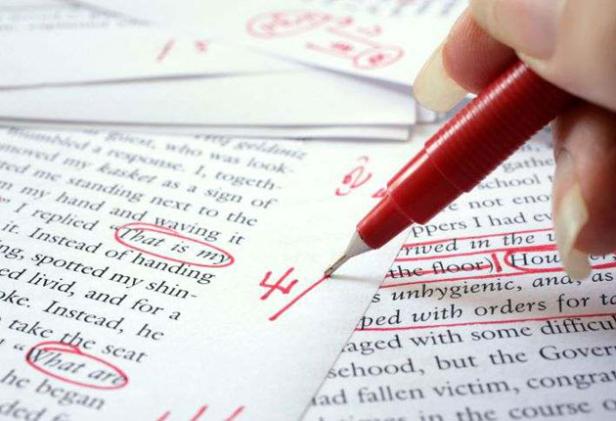Proofreading and editing may sound easy, but it is a serious task that requires expertise and focus. Proofreading basically refers to sorting out of errors, like spelling mistakes, grammatical errors or other construction errors in a document. Editing refers to the correction of these errors. Editing is not only confined to correction but also executing every way possible to make the document more appealing, precise and readable. That is the reason why specialized proofreaders and editors are in demand and can charge so much.
Not everyone can carry out the tasks of proofreading and editing with accuracy. However, if you are a writer and want to cut off costs of hiring a proofreader and editor, here are some basic and simple tips you may follow in order to get the job done by yourself:
Basic proofreading tips
According to professional proofreaders at SolidEssay.com, which is a research paper writing service, if you are writing in MS Word or another electronic word processor, proofreading gets a lot easier. MS Word automatically points out spelling mistakes, grammatical errors or other construction errors. However, relying on Word’s proofreading is not enough. A few mistakes may still remain unchecked. Hence, you will need to go through the document yourself. Focus and concentrate well during proofreading.
Writers face two main problems when proofreading:
1) They tend to overlook some lines.
2) They tend to go over the same lines over and over again.
These mistakes most commonly happen in electronic documents. To avoid this, you can divide a write-up into smaller paragraphs separated by a blank line. Then, you may go through the small paragraphs at a time and join them later once you are done. This reduces chances of overlooking or getting back to the same lines that you have already checked. Each paragraph should contain 4-5 lines, which will make proofreading a little easier for you. You will be able to sort out construction errors more easily.
If you are writing on a sheet of paper, use a scale to divide your document into virtual paragraphs. Put a scale after 4-5 lines, check those 4-5 lines thoroughly, then move the scale below the next 4-5 lines and check the portion. You can also place two small scales both above and below the paragraph you are checking. Finger-pointing and reading, as you were taught in your nursery classes, is very helpful during proofreading. This way you won’t overlook words or miss spelling mistakes, as unlike in electronic page-sheets, spelling errors in a handy sheet cannot be pointed out automatically.
Basic tips for editing
Editing is a tougher task than proofreading. In order to edit well by yourself, you will have to do it in two parts.
Firstly, editing will comprise of corrections of errors, which you will have sorted out. You will have already corrected spelling, grammatical and construction errors during proofreading.
The second stance of editing is précising the document, making it more appealing and readable. This will require ample time. Go through each portion of the document thoroughly. Read each section multiple times to figure out whether the construction can be improved. Insert or remove sentences as needed, and be deliberate about using better words. Something that did not strike you during writing may catch your attention during editing, and paying attention to it will improve your writing.
Proofreading and editing need focus and accurate methodologies. A writer can easily proofread and edit a document carefully and make it perfect by following these simple tips.
 Jeff is a Ph.D. student living and studying in California, who helps college students write and structure quality research papers. Upon graduating he plans to work as an academic instructor. He also loves traveling and exploring new countries, especially those in Asia.
Jeff is a Ph.D. student living and studying in California, who helps college students write and structure quality research papers. Upon graduating he plans to work as an academic instructor. He also loves traveling and exploring new countries, especially those in Asia.


This is what I needed.
Thank you.
I love people who share and give back- and Thank you for doing so! This is great info that so many of us need.
I would explain editing and proofreading this way: Editing is what we do to make a text better; we proofread to catch mistakes.
After each draft is finished, we edit for clarity, meaning, style, voice, and precision. In the editing process we also determine whether we have said what we set up in the thesis statement, and we make sure that we have substantiated all our assertions.
Proofreading is the last stop before publishing – because why correct spelling and typos in sentences and paragraphs that may not make it to the final copy? – then we make *corrections* to the text, not edits. Edits can be debated, but for the most part, the proofreader catches mistakes that are clear-cut wrong: errors of spelling, syntax, or style.
Very impressive article on proofreading,The tips are very helpful.
english language editing.
Brilliant article.The tips are very helpful.
wonderful blog with perfect information on proofreading.
english proofreading.
Those pursuing higher education would realize that how essential it is to carry out dissertation editing carefully, to be able to complete the degree with high scores.
Excellent blog , Nice piece of information.
english proofreading.
WOW, Great to find an awesome post about proofreading and editing especially for the writers. I need some writers for my website banner design service site. Would you suggest me some writers or do you offer services to write some guest post for my site!!!!Thanks,